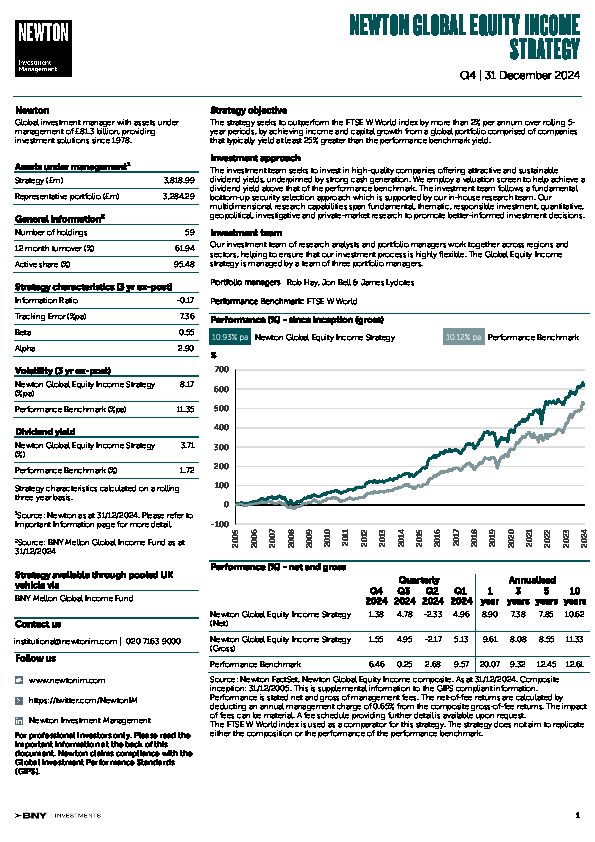Strategy profile
-
Objective
-
The strategy aims to achieve an above-benchmark index income over an annual period together with capital growth over the long term (5 years or more).
-
Performance benchmark
- FTSE World Index1
-
Typical number of equity holdings
-
40 to 70
-
Investment policy
-
- Every new holding typically has a prospective yield 25% greater than the benchmark at the point of purchase.
- Any holding whose prospective yield falls below the benchmark yield will trigger our sale discipline process.
- The strategy seeks to outperform the FTSE World Index by more than 2% per annum over rolling 5-year periods2
-
Strategy inception
-
1 January 2006
-
Strategy available through pooled UK vehicle
-
BNY Mellon Global Income Fund
View fund performance
View Key Investor Information Document
View prospectus -
-
1 The FTSE World Index performance benchmark is used as a comparator for this strategy. The strategy does not aim to replicate either the composition or the performance of the performance benchmark.
2 The target stated is for indicative purposes only and may be changed without notice. Targeted return is generally aspirational in nature, is not based on criteria and assumptions, and is not a guarantee of future returns.
Investment team
The strategy is managed by an experienced team with a wide range of backgrounds. In-house research analysts are at the core of our investment process, and our multidimensional research capabilities help to promote better-informed investment decisions.
Your capital may be at risk. The value of investments and the income from them can fall as well as rise and investors may not get back the original amount invested.







